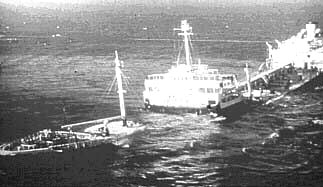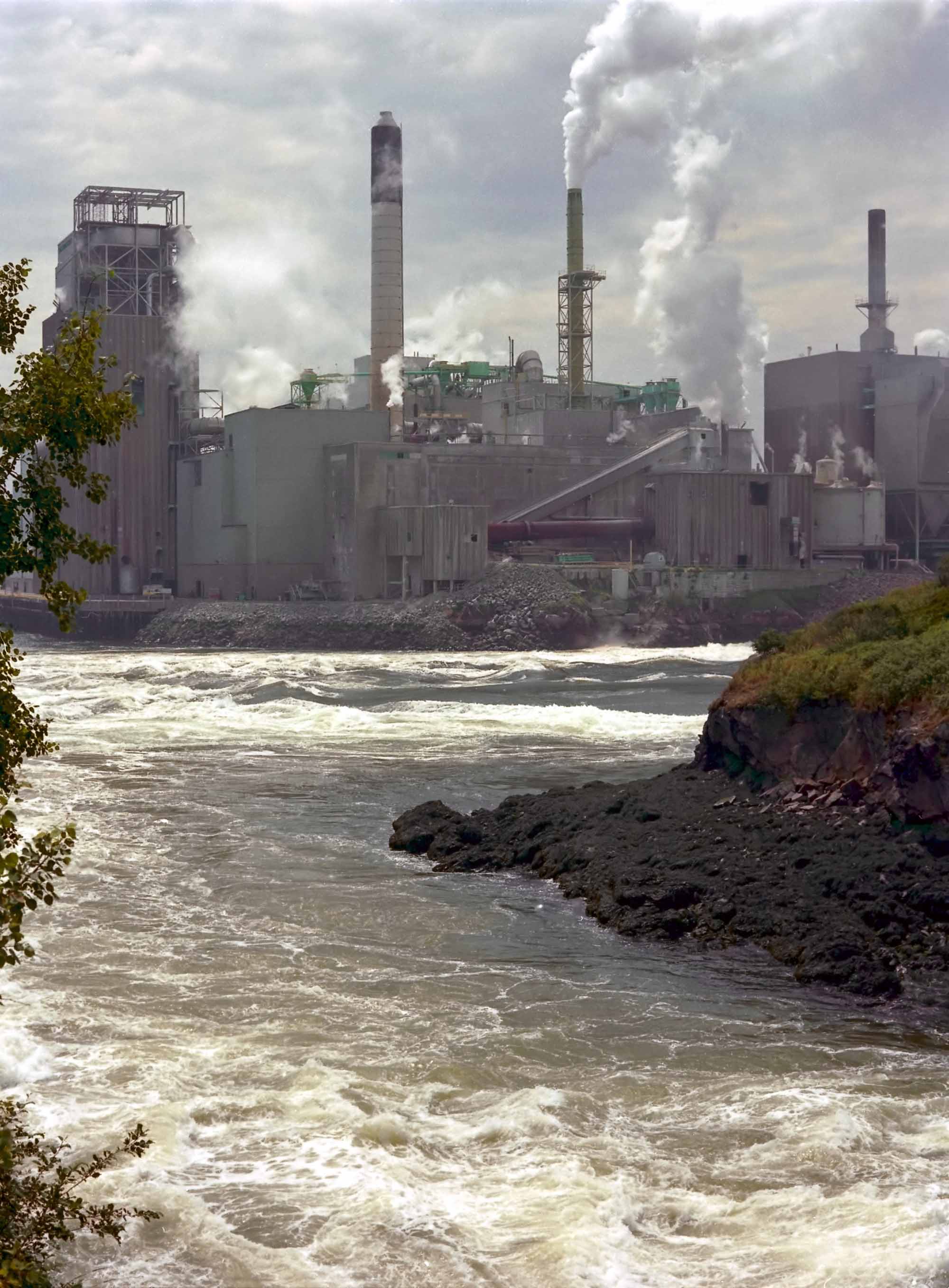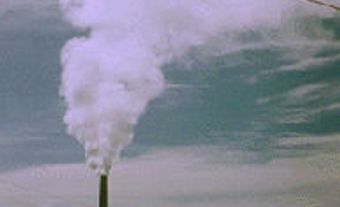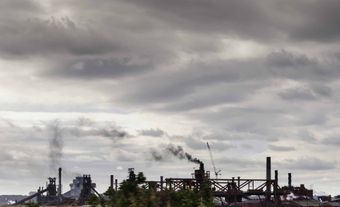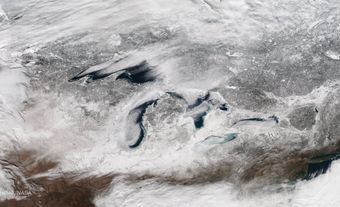Water pollution occurs when discharges of energy or materials degrade the quality of water for other users, including both humans and wildlife. Pollution can affect inland waters such as lakes , rivers and groundwater, as well as coastal marine waters. In a sense, pollution is ultimately caused by population growth and industrialization, but it can nevertheless be prevented if appropriate controls are in place to reduce the discharge of waste materials. In Canada, the worst cases of water pollution occur in southern parts of the country, where most people live and most agricultural and industrial activities occur. However, remote and less populated areas may also be affected by pollution from resource-based industries, such as oil-sand and metal-mining developments and pulp mills.
Types of Pollutants
Water pollution can be classified according to the nature of the causal substances, the sources releasing them and the water bodies into which they are discharged. The intensity of pollution is measured by the concentration of pollutants in the water and their effects on its uses. Six categories of pollutants are recognized. They are: pathogens, biochemical oxygen demand, nutrients, toxic materials, acidification and heat.
Pathogens
Pathogens are disease-causing bacteria, viruses and protozoa, usually originating from the disposal of improperly treated sewage of humans or livestock. As pathogen numbers increase, so does the risk to the health of people and animals that might use the water for drinking or bathing.
Biochemical Oxygen Demand
Biochemical oxygen demand (BOD) is created by organic wastes that are decaying and thereby depleting the oxygen content of water. Major sources of the organic wastes are pulp and paper and sewage from municipalities and agricultural sources. If the amount of dissolved oxygen is depressed close to zero, fish and other aquatic animals die. In addition, anaerobic (i.e., occurring without oxygen) decomposition generates noxious gases such as hydrogen sulphide, which can be toxic to wildlife.
Nutrients
Nutrients, particularly phosphorus and nitrogen, enrich waters and accelerate the aging of lakes and streams, a process known as eutrophication. The resulting growth of algae and plants can degrade conditions for other uses, such as for drinking water and recreational activities. Large amounts of algal and plant biomass can also depress oxygen levels when they decompose. Severe eutrophication can also ruin the aquatic habitat for wildlife. The major sources of nutrients in Canada are runoff from agricultural and municipal areas and improperly treated sewage.
Toxic Materials
Toxic materials in drinking water can affect the health of people, as well as aquatic organisms living in affected water bodies. Toxicants (i.e. toxic materials from human-made sources) include metals (e.g., lead, mercury), petroleum and other hydrocarbons, organochlorines (e.g., DDT, PCBs), polycyclic aromatic hydrocarbons (e.g., benzopyrene), and phthalates (e.g., dibutyl phthalate). They originate from many sources, often as a result of the large quantities of chemicals used in industries and urban areas. In some cases, mixtures of toxic materials can be toxic even if their individual concentrations are below levels thought to be toxic. Pollutants associated with spills of petroleum are toxic and may also smother aquatic organisms and cause the death of birds by destroying the waterproofing properties of their plumage.
Acidification
Acidification, particularly of lakes and rivers, is caused by run-off from precipitation (rain and snow) of sulphur dioxide and nitrogen oxides emitted by industries and automobiles (see acid rain). It may also be caused when certain waste rocks containing sulphide minerals, associated with the mining of coal and metals, are exposed to the atmosphere. This results in bacteria using the sulphide as a source of energy, producing acidity as a waste product of their metabolism.
Heat
The discharge of waste industrial heat into water can cause warmer water temperatures that many aquatic species cannot tolerate. It may also contribute to low oxygen concentrations by speeding up the rate of decomposition of organic matter. The discharges are often associated with coal- or nuclear-fuelled power plants, and sometimes with large factories. Electric power plants, for example, might withdraw water from a nearby water body to use for cooling in the plant and then return the heated water to the same water body.
Control of Pollution
Canada's rich endowment of fresh and marine waters is threatened by regional shortages (e.g., in southern Saskatchewan and Alberta) and by pollution. Although pollution from pathogens, toxicants, BOD, nutrients, acidification and waste heat may be prevented and relatively easily reversed, eutrophication and oil spills are more difficult, and acidification and toxicity may be irreversible.
The most cost-effective measures for controlling pollution depend on the particular sources and the damage being caused. Pathogens are usually controlled by the disinfection (often using chlorine or ozone and sometimes filtration) of municipal or agricultural sewage wastes, or of water intended for domestic use (see water treatment). BOD can be reduced by treating organic wastes from municipal and agricultural sources to decrease the amount of organic matter (and the oxygen demand) before the effluent is discharged into an aquatic habitat. Releases of phosphorus and nitrogen are controlled by regulating certain products (e.g., by requiring phosphorus-free detergents), by land-use regulations (e.g., by limiting the use of agricultural fertilizer), and by installing specialized treatment processes for municipal and agricultural wastewaters.
Toxicants are best controlled by preventing them from being dumped into aquatic environments. Different toxicants present particular regulatory possibilities and problems. For example, the manufacturing and use of DDT and PCBs has been banned in Canada, and systems are now being required in industrial processes to prevent the dumping of certain metals and other potentially toxic substances. Some toxicants have been replaced by nontoxic substitutes, such as the replacement of cyanide rinses in electroplating. Municipal and industrial wastewater treatment processes also help to isolate many toxic materials within sludges, which can then be treated or dumped in a secure places landfill. Acidification can be prevented by controlling discharges of sulphur and nitrogen oxides into the atmosphere, which has been done, although not to the degree that large-scale acidification is no longer a problem. The dumping of waste heat into waterbodies can be prevented by using special cooling towers and ponds that dissipate the energy into the atmosphere.

 Share on Facebook
Share on Facebook Share on X
Share on X Share by Email
Share by Email Share on Google Classroom
Share on Google Classroom
